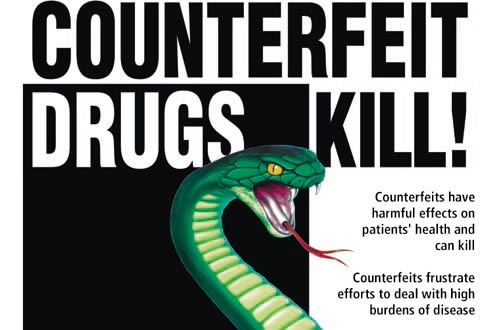While counterfeit drugs are commonplace in developing countries, criminals in the developed world tended to focus on illegal ‘hard’ drugs, which offer high returns on investment. However, several factors are combining to shift criminal activity to counterfeit ‘legitimate’ drugs in developed countries. These include the high cost to develop and market legitimate drugs, the rising demand for prescription ‘lifestyle’ drugs, the declining margins associated with illegal drugs, the increasing accessibility of the tools needed to create and distribute counterfeit drugs, the effect of deregulation and Internet sales channels, and the mild response of law enforcement to counterfeiting.
Fraudulent act on counterfeit medicines is not a new issue. The Peterson Group, a non-profit organization who has fought counterfeiting throughout the years is not the only one who has this advocacy. Like poverty, world hunger and racism, this topic has been around for decades. While developed countries and cities like America or Singapore have been fighting off the distribution of “illegal hard drugs”, developing places like Kuala Lumpur, Malaysia, Cambodia and Jakarta Indonesia are focusing on tampering and diversion of counterfeited drugs. Let us review the factors the scammers might have for them to thrive in this business and factors why people continue to patronize:
1. High Cost of Drug Development
Because it takes billions of dollars to develop, patent, distribute and bring new pharmaceuticals to market, counterfeiters took advantage of it and produced their own to sell.
2. Rising Demand for Prescription
An aging population, the ongoing development of new drug-based remedies for many diseases, and the increasing prevalence of direct-to-consumer advertising contribute to the consistent double-digit growth of pharmaceutical sales each year. In addition, “the abuse and trafficking of prescription drugs is set to exceed abuse of illicit drugs” as prescription drugs used for ‘recreational’ purposes, such as Oxycontin, increasingly take the place of hard drugs among substance abusers —a trend highlighted by the U.N. International Narcotics Control Board in 2006.
3. Accessibility of Sophisticated Imaging and Printing Technologies
High-quality graphic design technologies combined with low-cost scanners and imaging programs, provide the means to create realistic counterfeit packaging and labels. Color printers, capable of printing highly sophisticated images and scanners have become so commonplace that they are given away with many computers. The accessibility of these tools means that criminals no longer need highly-technical computer technology or expensive hardware to create convincing reproductions of packaging materials.
4. Online Ease
The Internet makes it possible for individuals to engage in drug reimportation and tampering with little resistance from government regulators. Hundreds of websites that has been dispensing prescription drugs but do not offer an online prescribing service. With little or no government oversight, and anonymity for buyers and sellers alike, the Internet offers would-be counterfeiters and parallel importers an ideal means for implementing illicit activities.





